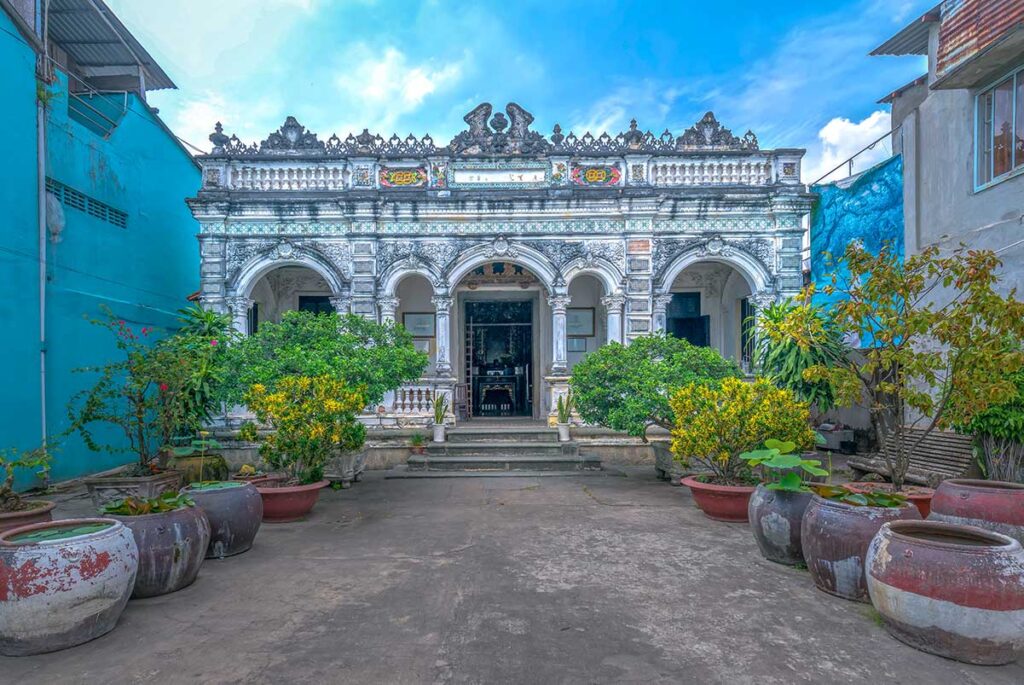What is Huynh Thuy Le Ancient House?
Huynh Thuy Le Ancient House is a small but historically significant landmark in Sa Dec, officially recognized as a national relic site in 2009. From the outside it resembles a French colonial villa, yet the layout follows the traditional three-chamber style of southern Vietnam and the interior is decorated with Chinese-inspired carvings, altars, and motifs. This unusual blend makes it one of the more distinctive old houses in the Mekong Delta.
What makes the house particularly famous, however, is its association with French writer Marguerite Duras. Her youthful romance with Huynh Thuy Le, the son of the original owner, later inspired the best-selling novel The Lover and its film adaptation. Because of this connection, the house is sometimes referred to as “The Lover’s House,” drawing both literature fans and curious travelers. While it is not a large site, it carries cultural weight that goes beyond its size.
History of Huynh Thuy Le Ancient House
Construction (1895)
The house was built in 1895 by Huynh Cam Thuan, a wealthy Chinese merchant from Fujian who prospered in Sa Dec’s busy riverfront trading hub. At first it was a traditional three-compartment wooden house typical of southern Vietnam, with valuable timber and a curved yin-yang tile roof.
Renovation (1917)
In 1917, Huynh Thuy Le inherited the property and renovated it extensively. The wooden walls were replaced with brick, giving the exterior the appearance of a French villa. Inside, however, the design followed a Vietnamese three-room layout, decorated with elaborate Chinese-style carvings, gilded panels, and ancestral altars. This mix of influences gave the house its distinctive East–West character that visitors still notice today.
Later years (1970s–2000s)
After Huynh Thuy Le’s death in 1972, his wife and children settled overseas and the house was left unused. From 1975, it was repurposed as an administrative office. By the early 2000s it had fallen into disrepair but was restored and opened to tourists in 2007. In 2009, it was officially recognized as a national relic site, ensuring its preservation.
The Marguerite Duras connection
Beyond its architecture, the house is widely known for its link to French writer Marguerite Duras. As a young woman in the 1920s, she had a romance with Huynh Thuy Le that lasted about 18 months before ending under family and cultural pressure. Decades later she turned the story into her acclaimed novel L’Amant (The Lover, 1984), which won France’s Prix Goncourt and was adapted into a film in 1992. Because of this literary connection, the site is often nicknamed “The Lover’s House” and continues to attract visitors curious about both history and literature.
Highlights of Visiting Huynh Thuy Le House
1. Architecture & Layout
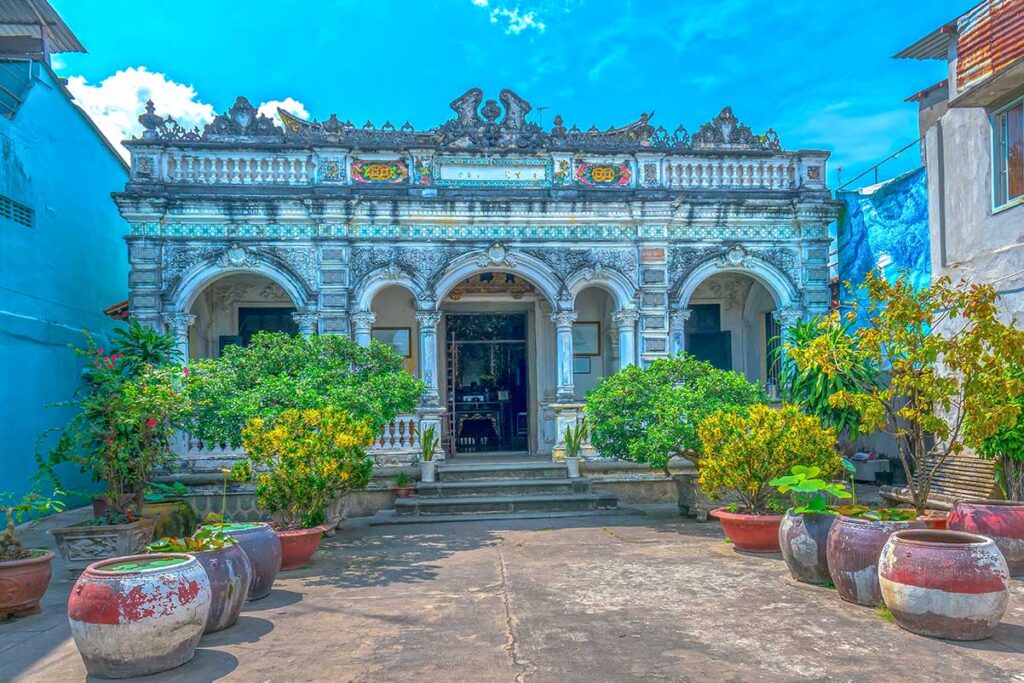
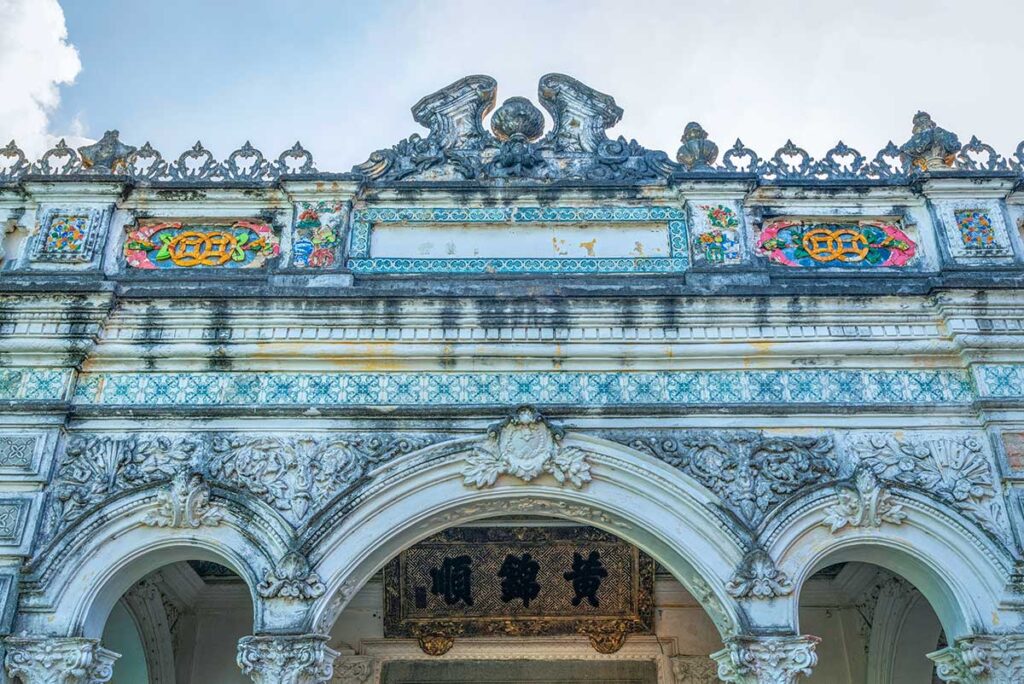
The first impression of the house is its unusual East–West fusion. From the street, the façade resembles a French villa, with Roman arches and a Renaissance-style balcony. Step inside and you’ll find the traditional three-compartment structure of southern Vietnam, while the decorations reflect strong Chinese influences. The mix of yin-yang roof tiles, carved balconies, and gilded details gives it a character different from other houses in the region.
2. Interior & Furniture
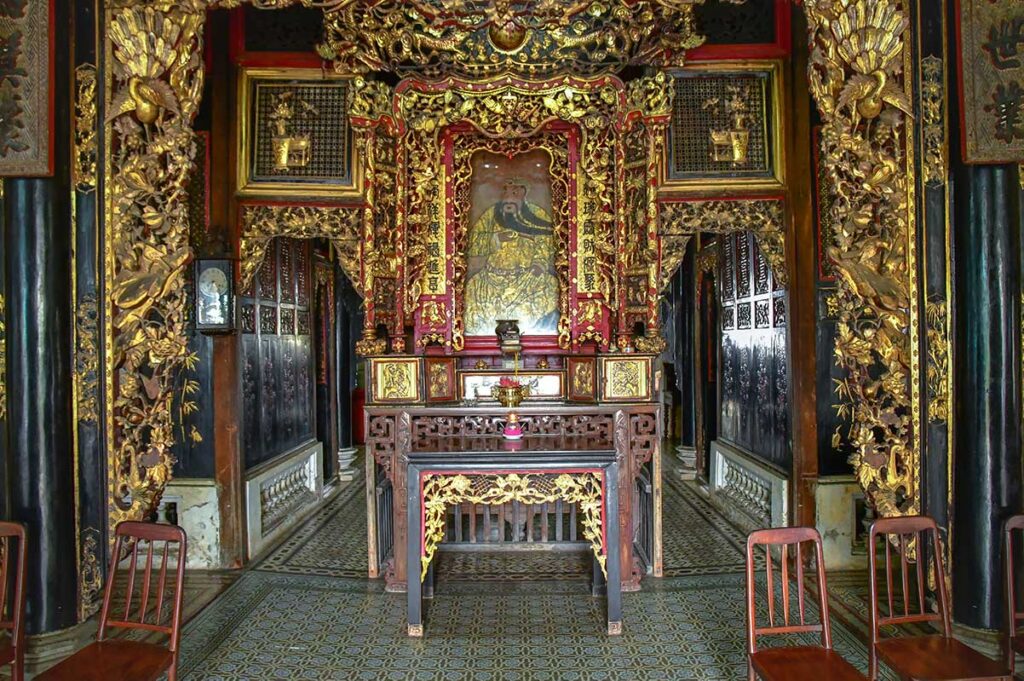
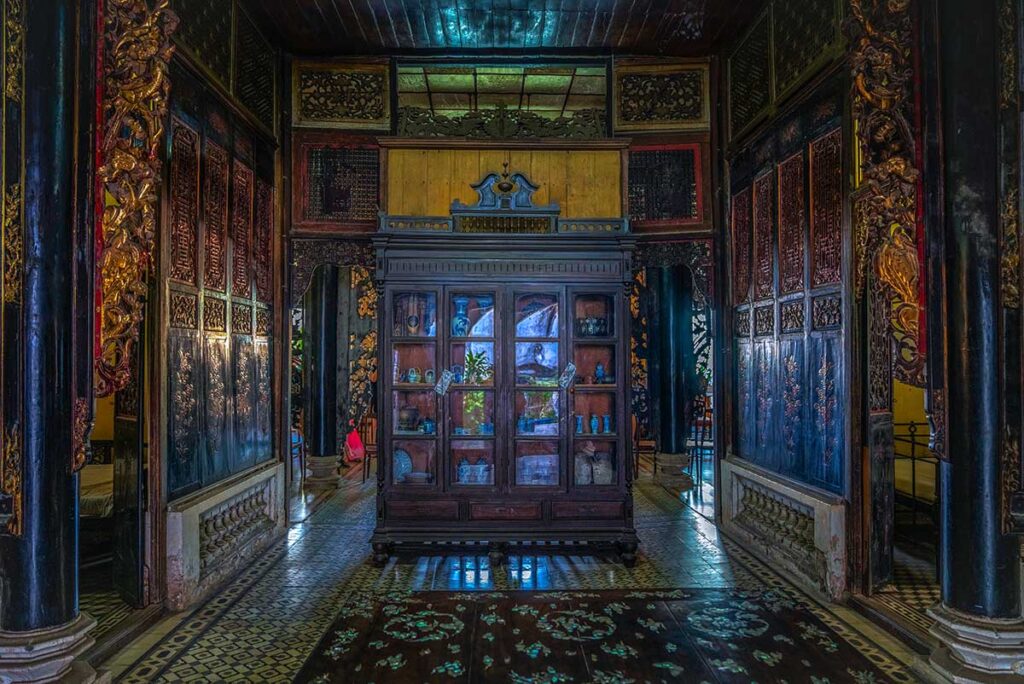
The interior is more elaborate than its size suggests. Carved wooden furniture, lacquered altars, and French-imported ceramic floor tiles dominate the rooms. The central floor is intentionally built lower, following the feng shui belief that water (and therefore wealth) flows toward a hollow. A striking altar to Guan Gong, a Chinese military hero, takes pride of place, surrounded by symbolic motifs such as dragons and phoenixes.
3. Artifacts & Decorative Details
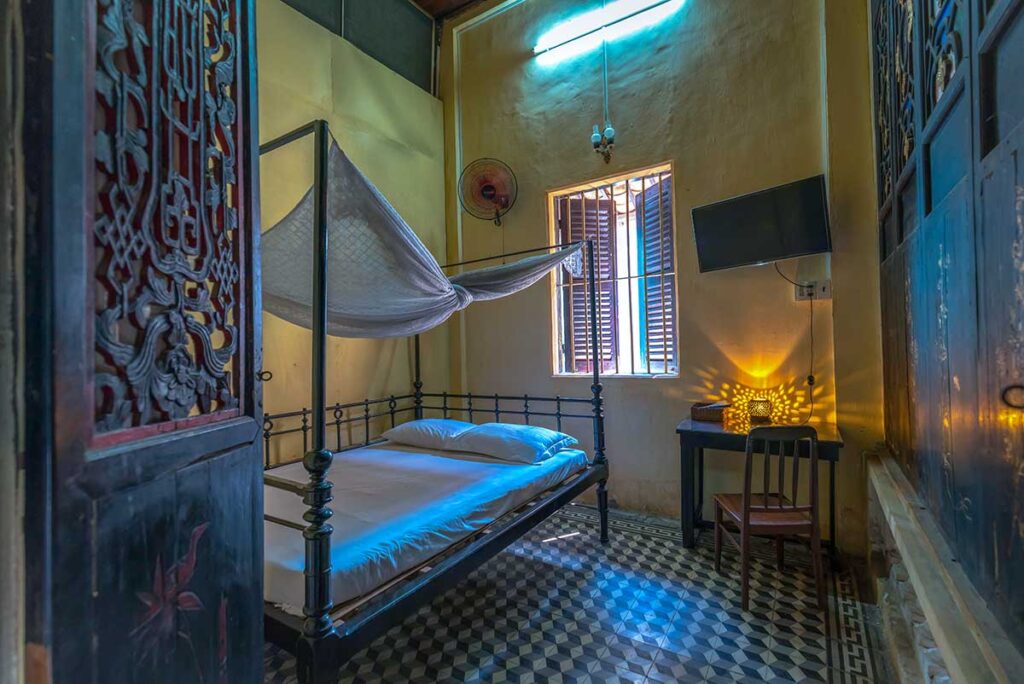
Although some visitors find the house small and sparsely furnished compared to a museum, there are still interesting decorative details. Antique wardrobes, beds, gramophones, tea sets, and vases remain from earlier times. One notable feature is the portrait of General Zihuang, painted by Fujian artists, which is considered one of the best of its kind in the Mekong Delta. The details are subtle, but they reward those who take the time to look closely.
4. The Lover Story Experience
For many travelers, the house is less about the architecture and more about the famous love story between Huynh Thuy Le and Marguerite Duras. Local guides usually recount the romance, often with a mix of fact and legend, and connect it to Duras’ novel The Lover. Visitors are sometimes offered tea while listening, which adds to the atmosphere. For fans of the book or film, this is a unique chance to connect the story with a real location, even if the actual events took place nearly a century ago.
5. Homestay & Events
In recent years, two of the bedrooms have occasionally been used for homestay services, giving guests the chance to spend the night in the old house. The setup is basic but atmospheric, and meals may be included. On some occasions, the house also hosts small cultural performances such as traditional music, though this is not a daily feature. It’s a niche experience best suited to those particularly interested in the house and its story.
Nearby: Kien An Cung Temple (Chùa Ông Quách)
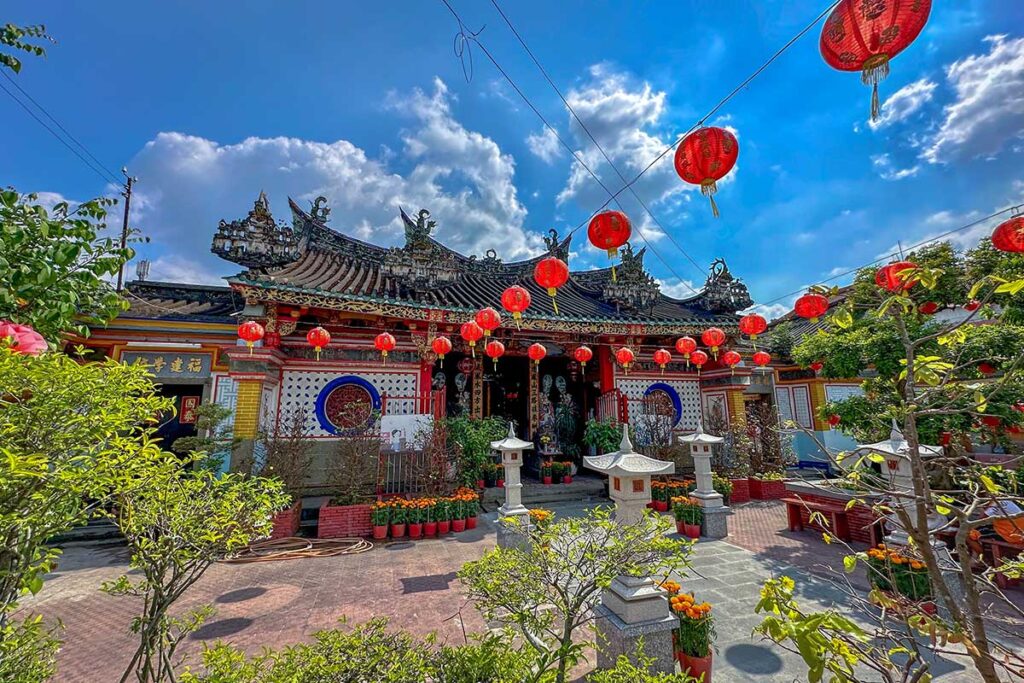
Just a short walk from Huynh Thuy Le Ancient House, Kiến An Cung Temple is one of Sa Đéc’s most ornate Chinese temples. Built between 1924 and 1927 by the local Fujianese community, it was largely financed by Huynh Thuy Le’s father, Huỳnh Cẩm Thuận, who was a prominent merchant at the time. The temple is dedicated to deities of Chinese folk religion and stands out for its richly carved wooden panels, colorful roof dragons, and gilded altars. Recognized as a national relic in 1990, it adds important context to the Huynh family’s role in Sa Đéc’s cultural history.
Visiting the temple is straightforward: it’s only about 200 meters (a three-minute walk) from the Ancient House. Entry is free, and it’s usually open during daylight hours. Most travelers spend 15–30 minutes here, making it an easy and worthwhile stop to combine with the Lover’s House and the nearby market.
Practical visiting information & Tips
Location & Address
Huynh Thuy Le Ancient House is located at 255A Nguyen Hue Street, Ward 2, Sa Dec City, Dong Thap Province. It sits close to the Sa Dec River and right by the central market, so it’s easy to combine with a walk through the old trading quarter.
Getting There
Sa Dec is about 140 km from Ho Chi Minh City, making it a 3–4 hour journey depending on traffic. The most common options are:
- Bus: Regular departures from Mien Tay Bus Station in Ho Chi Minh City.
- Private car: More comfortable if you’re short on time or traveling with family.
- Motorbike: Possible, but best suited to experienced riders who enjoy long drives through the Mekong countryside.
Most travelers visit the house as part of a broader Sa Dec trip, often combined with Sa Dec Flower Village and other local attractions.
Opening Hours & Entrance Fee
- Opening hours: Daily, around 7:00 – 18:00.
- Entrance fee: 40,000 VND (usually includes a short guided tour and sometimes tea)
Dress & Etiquette
Although this is a tourist attraction, it still has a family altar and a quiet, respectful atmosphere.
- Dress modestly: shoulders and knees covered if possible.
- Keep noise down: it’s a small house, and loud behavior feels out of place.
- Listen to guides: the short explanations are the highlight for many visitors.
Facilities
- Toilets: available at the back of the house.
- Souvenirs: a few small items may be for sale.
- Food & drinks: none inside, but plenty of street food and cafés around the nearby market.
Extra tips
- Avoid weekends and holidays: the house is small and feels crowded quickly.
- Read or watch The Lover beforehand: it makes the visit more meaningful.
- Combine with other sights: Sa Dec Flower Village, riverside temples, or nearby Dong Thap attractions turn the visit into a fuller day trip.
Is Huynh Thuy Le Ancient House worth visiting?
Huynh Thuy Le Ancient House is worth a stop if you’re already exploring Sa Dec. The mix of French, Vietnamese, and Chinese design makes it architecturally interesting, and the connection to Marguerite Duras’ The Lover adds a cultural layer that attracts literature fans. With a short guided tour, you’ll get a sense of both the family’s history and the romance that made the house famous.
That said, it is a small site with only a handful of artifacts on display. Most visits last no more than 30 to 60 minutes, and some travelers feel underwhelmed if they expect a grand museum or a lavish colonial mansion. It’s best appreciated as part of a wider Sa Dec itinerary, especially when combined with the flower village and local markets. Unless you have a particular interest in The Lover, the house alone is not a reason to travel all the way from Ho Chi Minh City.
